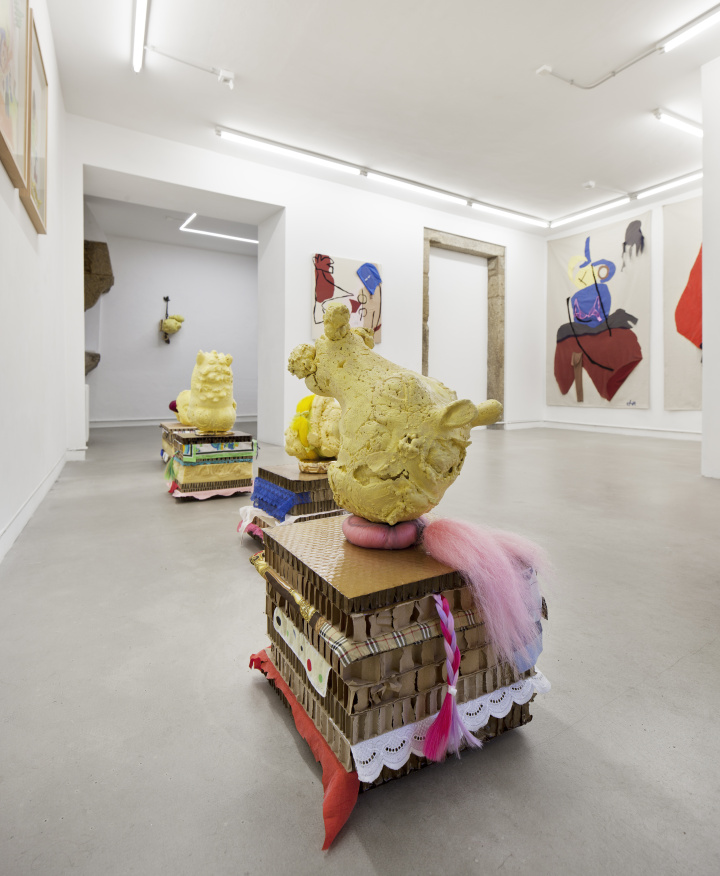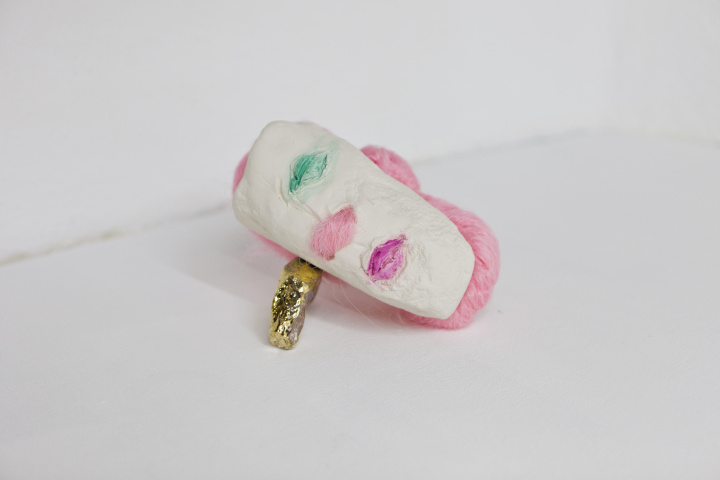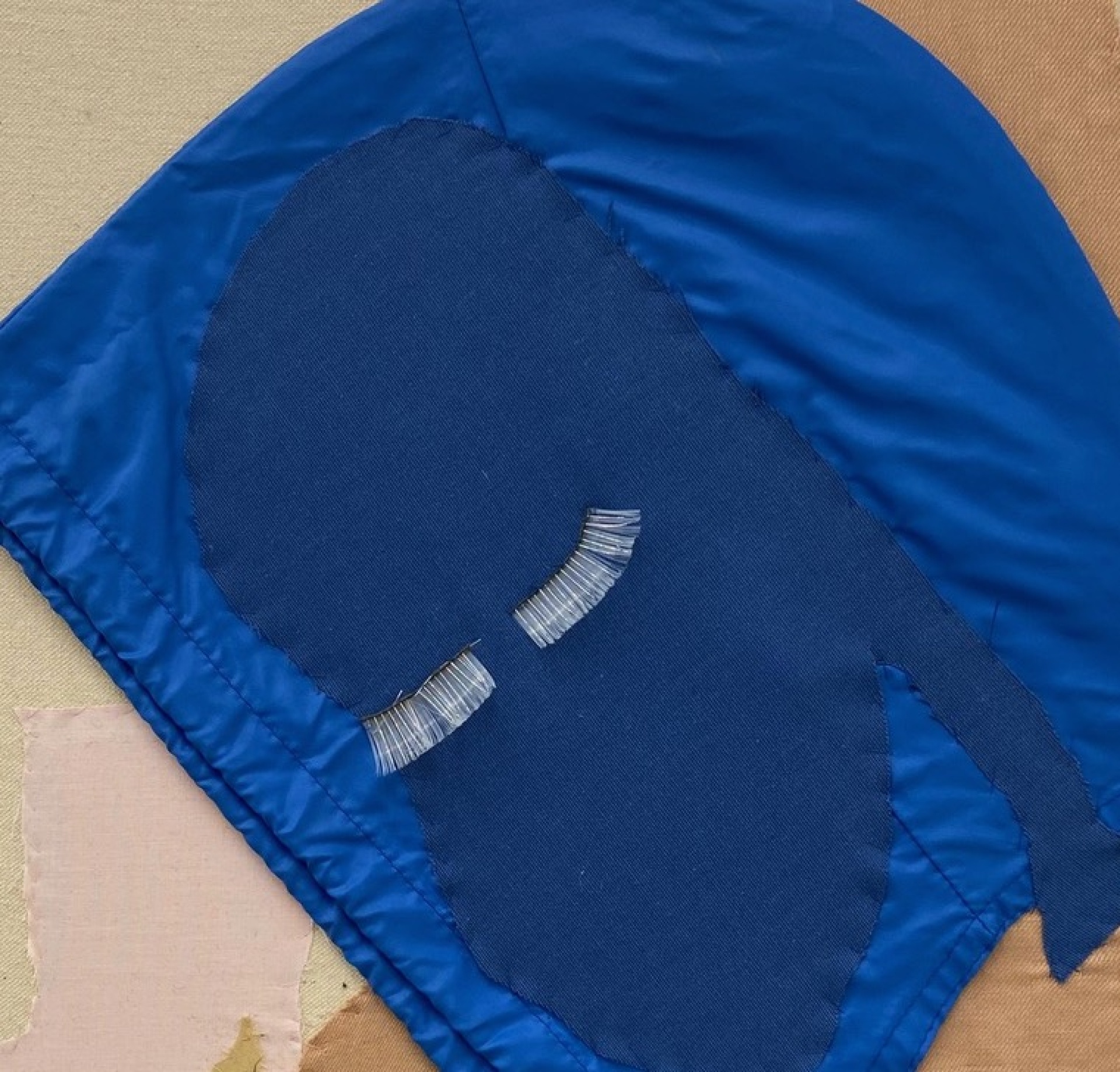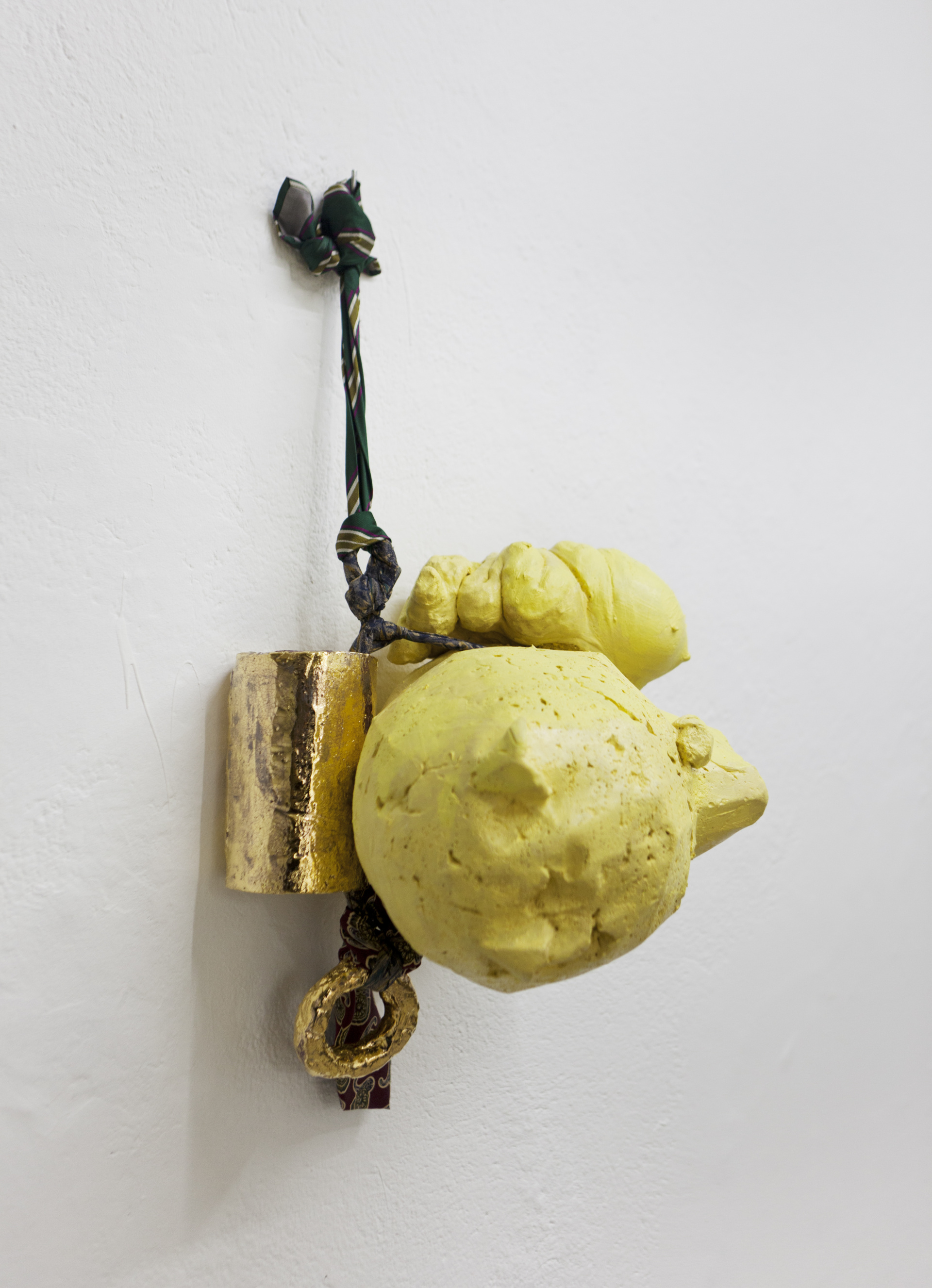Morriña púxose exuberante Chelo Matesanz From December 21 to February 27 Santiago
It's a mess again. I had to lie down as if I were going to take a nap. Cow horns. A fountain that is dry. Smell of freshly cut grass. Thistles. The color of thistles. I'm going to eat a piece of cake. The shape of the thistles. The hair so tight. We entered the dairy. Please knock. The silence is maintained. The train in the distance. Everything is blue or green. The smell of cattle. I am frightened. A brick house. The warmth of the stable. A nice uniform. My face hurt. I'm thirsty. Don't let me get sick. My cousin pulled my hair. We're going abroad. The bone begins to show through the flesh. She doesn't want to go to mass anymore.
The works refer us to the ancestral, no longer as an exaggerated vision of an expected costumbrismo for known, but as signs that activate aspects of the memory deposited in some distant place of our imaginary. They awaken that viscerality with their forms (cowbells, animal heads, clothing, etc.), but also with the projection of those sounds and smells that coexist within us. The primordial merges with desire in a surrealizing trickery, in a very close normality, the one that is generated when we do not need to lean on anything, the one that shows us as a faithful reflection of a deep reality, the one that harmonizes us with a last Goya, a Gutiérrez Solana or a Laxeiro. Masquerades, grimaces, laughter and carnivals, because we are flesh and to flesh we owe ourselves.
But beyond the flesh and the omnipresent viscera, all societies have attached to their skin the feeling of the transcendental, of questioning existence itself. Nóvoa Santos speaks to us of the nostalgia of a fabulous past and the yearning to return to the earth, to the "great mother". A search for security in this advance towards nowhere, but of necessary movement, we can think of the works of Seoane or Díaz Pardo, in which both the future and the past are attended to, perhaps to find a balance in the unstable reality of the present.















